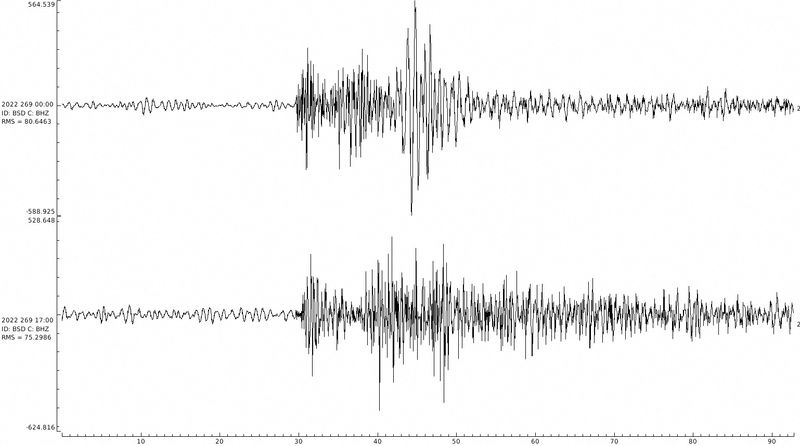BERLIN (Reuters) - A seismograph on the Danish island of Bornholm twice recorded spikes representing earth tremors on Monday, the day on which the Nord Stream 1 and 2 gas pipelines underwent dramatic falls in pressure, German geological research centre GFZ said.
The seismograph recorded near-silence until 0003 GMT (2am local time) when there was a spike representing a tremor in the earth followed by a continuous hissing waveform. The pattern repeated itself at 1700.
European politicians and security experts have suggested that the pipeline rupture near Bornholm could have been caused by sabotage. GFZ declined to be drawn on whether the tremors recorded could have been the result of an explosion.

"There was a spike and then regular noise," said GFZ spokesperson Josef Zens. "We cannot say if that could be gas streaming out."
Nord Stream 2 was first reported to have depressurised on Monday afternoon. The depressurisation in the Nord Stream 1 pipeline was reported in the early evening, shortly after the second of the two spikes.
